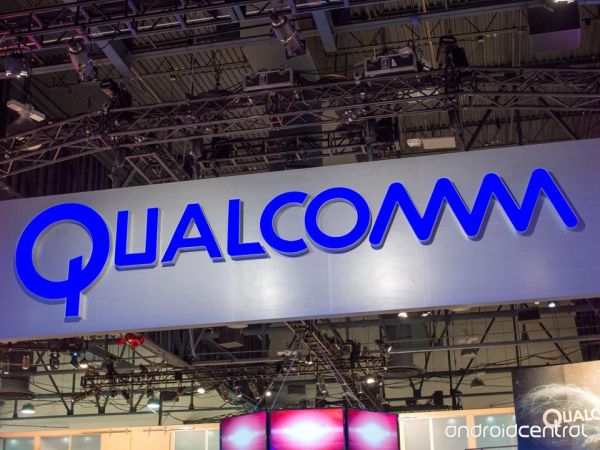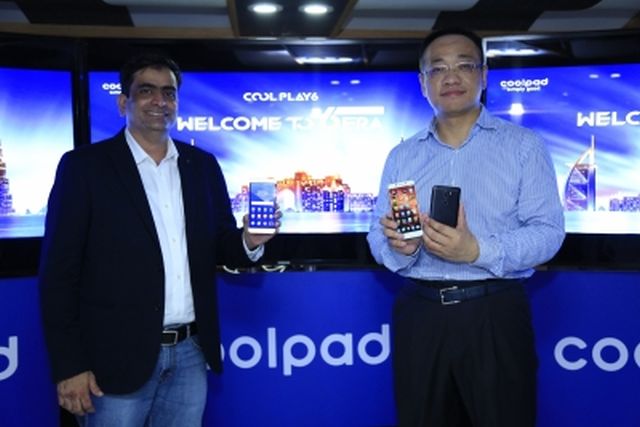
by Editor | May 25, 2021 | Business, Interviews, Marketing Basics, Markets, SMEs, Technology
 By Krishna Sinha Chaudhury,
By Krishna Sinha Chaudhury,
New Delhi : As the Indian market embraces the 4G Long Term-Evolution (LTE) technology ecosystem in a big way, global chip giant Qualcomm finds it natural to innovate for the growing 4G market in the country, a senior company executive has said.
According to Counterpoint Research’s “Market Monitor” service, LTE-installed base of mobile handsets crossed 150 million units in India — behind only China and the United States — and is estimated to surpass the US in the next one year.
Leading the 4G data race is Reliance Jio that has garnered 125 million customers across the country. Since its launch 10 months back, Jio has added seven customers per second on an average.
“The Indian market is rapidly transitioning into a 4G LTE market which marks an excellent opportunity for us,” Larry Paulson, Vice President and President of Qualcomm India, told IANS.
“Our roadmap at this point entirely consists of 4G LTE. We already carry a rich legacy in 2G and 3G technology in India,” Paulson added.
In March, the company announced Snapdragon 205 mobile platform that is targeted at 4G feature phones.
“Though there has not been any public announcement about 4G feature phones with Qualcomm but yes, we are moving ahead quite well with that technology,” Paulson noted.
Reliance Jio has launched a “free” JioPhone that is powered by Qualcomm’s 205 mobile platform.
Qualcomm believes the users in India give importance to value and that is why the company is focused on the value proposition.
“First and foremost, there is a long line of lessons in doing business in India. It is very important to listen to the market and the market has a high emphasis on value,” the executive said.
“We are enabling our customers and partners to build products that not only have high capabilities but also help them package those capabilities in a value proposition. With this, we have announced our roadmap at mobile platform 200 and then Snapdragon 450, 600, 800. I think we are addressing exactly that value proposition,” Paulson contended.
Acknowledging the company’s upward growth trajectory in the country, he said: “From a presence point of view, yes, we have grown. We have an engineering centre in Hyderabad, a development centre in Bengaluru and a wireless division in Chennai.”
The company stressed that it would continue to work on research and development and engineering technologies in the country.
Qualcomm is also confident about the newest addition to the Snapdragon 400 chipset family.
“We have four chipset families — the Snapdragon 200, 400, 600 and 800. Each one means more and enables more. To be able to bring that technology down to Snapdragon 400 level is very good for India. That also means we will be able to hit quite attractive price points and powerful technology,” Paulson told IANS.
Snapdragon 450 was unveiled at the Mobile World Congress (MWC) in Shanghai this year.
“This is the first time we have brought the 14 nanometre (nm) technology down into the Snapdragon 400 family. The benefits of this are power management and size,” the executive said.
Qualcomm India has also started an initiative named “SoochnaPreneur”, in association with Digital Empowerment Foundation (DEF), that aims to connect rural youth to information about government entitlement programmes.
The programme also aims to create technology-based entrepreneurship opportunities for the rural youth.
The initiative also demonstrates how advanced wireless technologies can be used for social and economic empowerment, helping to bridge information poverty gaps through last-mile information access and delivery of services.
(Krishna SinhaChaudhury can be contacted at krishna.s@ians.in)
—IANS

by Editor | May 25, 2021 | Branding, Business, Corporate, Corporate Buzz, Markets, SMEs, Technology
 Dubai : The 6GB RAM Coolpad Cool Play 6 smartphone launched for the Indian market at Rs 14,999 will be available exclusively on Amazon from September 4, the company has said.
Dubai : The 6GB RAM Coolpad Cool Play 6 smartphone launched for the Indian market at Rs 14,999 will be available exclusively on Amazon from September 4, the company has said.
The phone unveiled here on Sunday at an event comes in a metal body and sports a bezel display. It has a 5.5-inch Full HD display with 1080 x 1980 pixels screen resolution.
Powered by 1.95GHz Octa-core Qualcomm Snapdragon 653 processor Cool Play 6 would be the most affordable 6GB RAM smartphone in India. It also has a fingerprint sensor.
India and the US have now become two of the largest markets for Coolpad overseas.
“We have always believed in launching products that start a trend in the market and Cool Play 6 is yet another winner from Coolpad,” James Du, Global CEO, Coolpad Group, told reporters.
“We are also coming with exclusive Coolpad services centres in India with plan to have these in at least five cities in the next six months,” Du said.
The phone will be available exclusively on Amazon.in from September 4, in two colour variants — gold and black, Coolpad announced.
The phone offers 64GB of internal storage and packs 13 MP + 13 MP dual primary camera and a 8 MP front shooter for selfies.
It has 4000 mAh, non-removable Li-Po battery with a standby time up to 300 hours, with support for USB Type-C reversible connector and Dual SIM (Nano), the company said.
The phone runs on Android 7.1.1. The Android 8.0 OTA update will be provided by December, Coolpad said.
“In the last couple of years Coolpad has done well and we have beaten even our own estimates. Year 2017 has been a game changer for Coolpad in India and we continue to put our resources in the country with a plan to achieve 50 per cent growth to extend our market share to six per cent of the total market in India,” Syed Tajuddin, CEO, Coolpad India, said.
“We already have offline presence in eight states with a reach in 3,000 multi-brand outlets and have plans to expand it to a total number of 18 states in the next one year,” Tajuddin said.
“Coolpad smartphones have a 25 per cent market share on Amazon in the Rs 8,000 category,” he added.
—IANS

by Editor | May 25, 2021 | Business, Medium Enterprise
 By Vishal Gulati
By Vishal Gulati
Shimla:(IANS) Nearly 75 percent of all cigarettes in India are sold as single sticks valued at close to 30 percent of the Rs.35,000 crore (over $5 billion) Indian market, an international journal says. The sale of single cigarettes, which is not in the interest of public health, is an important factor for early experimentation, initiation and persistence of tobacco use, says the study.
“Based on the data collected from 10 jurisdictions, we estimate that nearly 75 percent (59-87 percent) of all cigarettes are sold as single sticks,” says the study, published in the Asian Pacific Journal of Cancer Prevention.
The study was conducted under the International Union Against Tuberculosis and Lung Disease across 10 cities – Agartala, Baroda, Chennai, Delhi, Goa, Indore, Jaipur, Jorhat, Patna and Shimla. It recommends that the Indian government ban the sale of single cigarettes and eliminate “kiddy packs”. (The ban does exist but is observed more in breach than in practice.)
“Under the tobacco control legislation in India, each tobacco product has to bear a specified pictorial health warning. But the single cigarette sales defy the overall purpose,” study co-investigator Ravinder Kumar told IANS.
“The single cigarette sale is a win-win game for the tobacco industry, but not in the interest of public health,” said Kumar, a consultant with the World Health Organization’s tuberculosis programme and based in Shimla.
It says single or loose cigarettes also promote the sale of illicit cigarettes and neutralise the effect of pack warnings and effective taxation, making tobacco more accessible and affordable to minors.
This is the first study to have estimated the size of the country’s single stick market.
The survey was conducted in February 2014 by 10 authors to estimate the sale of cigarettes in packs and sticks, by brands and price over a full business day.
Smoking of cigarettes, bidis and other smoked forms of tobacco are the single largest cause of preventable death among adults in India with more than 1.2 million dying annually.
The study says singles are preferred by smokers as it helps to conceal their habit since it is largely unacceptable publicly in India.
The singles also give vendors a perverse incentive to extract extra margins. For cigarette companies, singles make it easier to promote new brands and conduct market research on customers at the point of sale.
Vendor interviews reveal that the high volumes of singles sale in the premium segment is experimentation of new and existing users, who aspire to become regular smokers of these cigarettes, which are currently smoked occasionally by them, says the study.
oa among all jurisdictions has the lowest proportion of single cigarette sales and higher pack sales.
It finds that in effect a single cigarette market neutralises four important tobacco control strategies – protecting minors, pictorial warnings, support quitting and effective taxation.
According to it, students are vulnerable to an early initiation of tobacco use. An easy affordability of loose cigarettes is an enabling factor for the students and minors.
The study establishes that taxes can be raised from 15 percent to 32 percent (depending upon the segment) till such time as single stick price and pack price variance is zero or diminished.
(Vishal Gulati can be contacted at vishal.g@ians.in)



